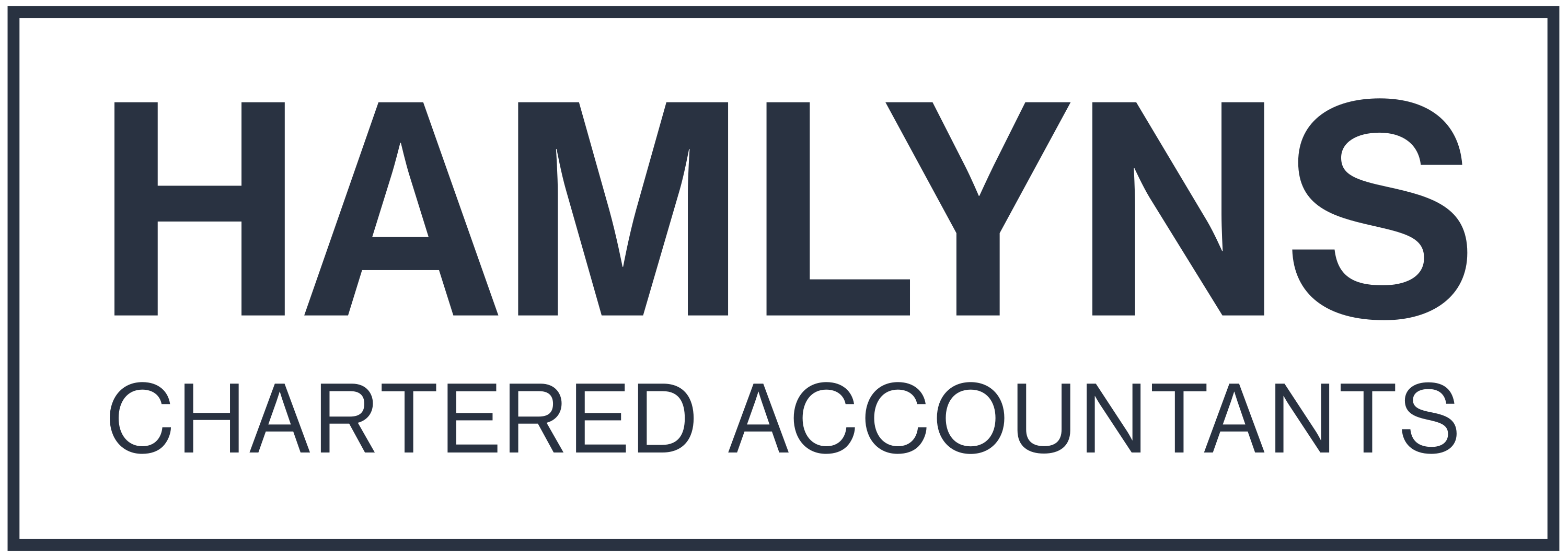Coronavirus Job Retention Scheme

Coronavirus Job Retention Scheme – What You Need To Know
The Coronavirus Job Retention Scheme (CJRS) is designed to support businesses that would have made staff redundant during the Coronavirus crisis.
This support measure is open until March 31st 2021.
How does it work?
Whilst these businesses are affected, the scheme allows eligible businesses to “furlough” employees, effectively ceasing or reducing their work but through claiming through the CJRS, continue to pay them so that they can return to work after the crisis is over.
Initially the scheme did not allow furloughed employees to work part-time, but now flexibility is allowed so employers can furlough based on hours not worked.
What can be claimed?
Employers can claim up 80% of employee’s furloughed time or usual monthly wage costs (up to a cap of £2,500 per month).
As of 31 July 2020- employers must pay the employers national insurance and employers pension contributions.
Employers can also choose to top up the extra 20% of staff salary but are not required to do so.
What are the deadlines?
| Claim for furlough days in | Claim must be submitted by |
|---|---|
| November 2020 | 14 December 2020 |
| December 2020 | 14 January 2021 |
| January 2021 | 15 February 2021 |
| February 2021 | 15 March 2021 |
| March 2021 | 14 April 2021 |
What do I need to do?
If you as an employer intend to use the scheme, you will need to discuss with the relevant employees that they will be reclassified. This change remains subject to employment law and depending on the employment contract, may be subject to negotiation.
To be eligible for the grant, employers must confirm in writing to their employee that they have been furloughed. A record of this communication must be kept for five years.
Employees that you can no longer afford to keep due to the situation will need to be classified as a “furloughed worker”.
The employee must be kept on the payroll.
An employee can be furloughed part-time if they are only required for limited hours.
The HMRC claim potal can be found here: https://www.gov.uk/guidance/claim-for-wages-through-the-coronavirus-job-retention-scheme/
What information do I need to make a claim?
To claim, you will need:
- your ePAYE reference number
- the number of employees being furloughed
- the claim period (start and end date)
- amount claimed
- your bank account number and sort code
- your contact name
- your phone number
You will need to calculate the amount you are claiming. HMRC will retain the right to retrospectively audit all aspects of your claim.
Further detail on how to calculate the claim can be found here: https://www.gov.uk/guidance/calculate-how-much-you-can-claim-using-the-coronavirus-job-retention-scheme/
What happens after I claim?
Once you have claimed you will be provided a claim reference number, HMRC will then check the claim is correct and pay the amount by BACS within 6 working days.
You must keep a copy of all records for 6 years, including:
- the amount claimed and claim period for each employee
- the claim reference number for your records
- your calculations in case HMRC need more information
- for employees flexibly furloughed, usual hours worked
- for employees flexibly furloughed, actual hours worked
You must also tell your employees you have made a claim and that they do not need to take any more action, and pay your employee thier wages, if you have not already.
You should make your claim in accordance with actual payroll amounts at the point at which you run your payroll or in advance of an imminent payroll.
You must pay the employee all the grant you receive for their gross pay, no fees can be charged from the money that is granted. You can choose to top up the employee’s salary, but you do not have to.
Does this scheme apply to zero hour contract workers?
Yes – the scheme applies to full-time employees, part time employees, employees on agency contracts and employees on flexible zero hours contracts.
How do I calculate the pay for employees whose pay varies?
If the employee has been employed for a full 12 months prior to the claim, you can claim for the higher of either:
- The same month’s earning from the previous year;
- Average monthly earnings from the 2019-20 tax year.
If the employee has been employed for less than a year, you can claim for an average of their monthly earnings since they started work.
If the employee only started in February 2020, use a pro-rata for their earnings so far to claim.
Can I claim for employees that have seen a drop in working hours due to Coronavirus?
Yes – employers can furlough employees on a part-time basis.
The hours worked as normal must be fully paid by the employer, with furlough days kept track of for claim purposes.
What if my employee’s furloughed wage is below the National Living Wage/Minimum Wage?
Individuals are only entitled to the National Living Wage (NLW) / National Minimum Wage (NMW) for the hours they are working.
Therefore furloughed workers who are not working must be paid the lower of 80% of their salary or £2,500 even if, based on their usual working hours, this would be below NLW/NMW.
However, if workers are required, for example, to complete online training courses whilst they are furloughed, then they must be paid at least the NLW/NMW for the time spent training, even if this is more than the 80% of their wage that will be subsidised.
What if my employee has more than one job?
If your employee has more than one employer, they can be furloughed for each job. Each is separate and the cap applies to each employer individually.
What if they do volunteer work or training?
A furloughed employee can take part in volunteer work or training, as long as it does not provide services to, or generate revenue for, or on behalf of, your organisation.
However, if workers are required to for example, complete online training courses whilst they are furloughed, then they must be paid at least the NLW/NMW for the time spent training, even if this is more than the 80% of their wage that will be subsidised.
Is this taxable income for the business?
Payments received by a business under the scheme are made to offset these deductible revenue costs. They must therefore be included as income in the business’ calculation of its taxable profits for Income Tax and Corporation Tax purposes.
Businesses can deduct employment costs as normal when calculating taxable profits for Income Tax and Corporation Tax purposes.
What if they were furloughed halfway through a pay period?
Grants will be prorated if your employee is only furloughed for part of a pay period.
What about past overtime, fees, commission, bonuses and non-cash payments?
You can claim for any regular payments you are obliged to pay your employees. This includes wages, past overtime, fees and compulsory commission payments. However, discretionary bonus (including tips) and non-compulsory commission payments and non-cash payments should be excluded.
What if employees have Benefits in Kind and are part of Salary Sacrifice Schemes?
The reference salary should not include the cost of non-monetary benefits provided to employees, including taxable Benefits in Kind. Similarly, benefits provided through salary sacrifice schemes (including pension contributions) that reduce an employee’s taxable pay should also not be included in the reference salary.
Where the employer provides benefits to furloughed employees, this should be in addition to the wages that must be paid under the terms of the Job Retention Scheme.
Normally, an employee cannot switch freely out of a salary sacrifice scheme unless there is a life event. HMRC has agreed that COVID-19 counts as a life event that could warrant changes to salary sacrifice arrangements, if the relevant employment contract is updated accordingly.
What about the Apprenticeship Levy and Student Loans?
Both the Apprenticeship Levy and Student Loans should continue to be paid as usual. Grants from the Job Retention Scheme do not cover these.
Can my furloughed workers work for another employee?
If contractually allowed, employees are permitted to work for another employer whilst you have placed them on furlough.
For any employer that takes on a new employee, the new employer should ensure they complete the starter checklist form correctly.
If the employee is furloughed from another employment, they should complete Statement C.
What about apprentices?
Apprentices can be furloughed in the same way as other employees and they can continue to train whilst furloughed.
However, you must pay your Apprentices at least the Apprenticeship Minimum Wage, National Living Wage or National Minimum Wage (AMW/NLW/NMW) as appropriate for all the time they spend training. This means employers must cover any shortfall between the amount claimed for their wages through this scheme and their appropriate minimum wage.
What if I made employees redundant or they stopped working for you after 23 September 2020?
If you made employees redundant, or they stopped working for you on or after 23 September 2020, you can re-employ them, put them on furlough and claim for their wages through the scheme.
What about my employees with caring responsibilities?
Employees who are unable to work because they have caring responsibilities resulting from coronavirus (COVID-19) can be furloughed. For example, employees that need to look after children can be furloughed.
What about shielding employees?
You can claim for furloughed employees who are shielding in line with public health guidance (or need to stay home with someone who is shielding) if they are unable to work from home and you would otherwise have to make them redundant.
What if my employee is on a fixed term contract?
Employees on fixed term contracts can be furloughed. Their contracts can be renewed or extended during the furlough period without breaking the terms of the scheme. Where a fixed term employee’s contract ends because it is not extended or renewed you will no longer be able claim grant for them.
What about salaried members of Limited Liability Partnerships (LLPs)?
Members of LLPs who are designated as employees for tax purposes (‘salaried members’) under the Income Tax (Trading and Other Income) Act (ITTOIA) 2005 are eligible to be furloughed and receive support through this scheme.
The rights and duties of a member of an LLP are set out in an LLP agreement and in the absence of an agreement, default provisions in the LLP Act 2000, based upon company and partnership law. Such an agreement may include separate agreement between the LLP and an individual member setting out the terms applicable to that member’s relationship with the LLP.
To furlough a member, the terms of the LLP agreement (or any such agreement between the LLP and the member) may need to be varied by a formal decision of the LLP, for example to reflect the fact that the member will perform no work in the LLP for the period of furlough, and the effect of this on their remuneration from the LLP.
For an LLP member who is treated as being employed by the LLP (in accordance with s863A of ITTOIA 2005), the reference salary for this scheme is the LLP member’s profit allocation, excluding any amounts which are determined by the LLP member’s performance, or the overall performance of the LLP.
And what about Agency Workers?
Where agency workers are paid through PAYE, they are eligible to be furloughed and receive support through this scheme, including where they are employed by umbrella companies.
Furlough should be agreed between the agency, as the deemed employer, and the worker, though it would be advised to discuss the need to furlough with any end clients involved. As with employees, agency workers should perform no work for, through or on behalf of the agency that has furloughed them while they are furloughed, including for the agency’s clients.
Where an agency supplies clients with workers who are employed by an umbrella company that operates the PAYE, it will be for the umbrella company and the worker to agree whether to furlough the worker or not.
Will furloughing my employees be public information?
From December 2020, HMRC will publish employer names and for companies and LLPs, the company registration number of those who have made claims under the scheme for the month of December onwards.




